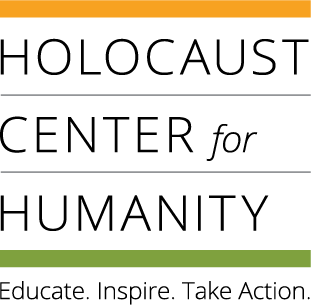Jewish in Seattle Magazine | April 15, 2019 | By Gregory Gutterman Scruggs
Click here to read the full story
In March, a photo surfaced of two Mercer Island High School students giving a Nazi salute. Shortly before that, in January, Eastside residents found anti-immigrant flyers packaged with Snickers bars directing them to bloodandsoil.org, a web address for hate group Patriot Front. And just prior to that, in November, a West Seattle family awoke to the message “F--- JEW THIEVES” on the sidewalk and “JEW” spray-painted on their house.
Despite our region’s reputation as an inclusive, tolerant community, anti-Semitism is a prejudice with long roots in the Pacific Northwest,and it is resurging in this place we call home. But from Jewish groups to law enforcement, the community is not standing idly by as accounts of swastika graffiti, Holocaust denial, and Jewish conspiracy theories swell.
Anti-Semitic bias incidents, such as vandalism, assault, and harassment, are indisputably on the rise nationally. According to the Anti-Defamation League, from 2016 to 2017 such incidents increased by 57 percent, and in K–12 schools the increase was 94 percent. Locally, the FBI’s hate crime index also demonstrates an uptick. Since the agency began tracking hate crimes by state in 1992, incidents tagged “anti-Jewish” in Washington have ranged from a low of 6 to a high of 25. In 2017, the number hit an all-time high of 43 — up from 19 the year before, the highest since 1993.
[...]
Dee Simon, Baral Family Executive Director of the Holocaust Center for Humanity, fields plenty of inquiries from concerned educators after they discover a swastika scrawled on a locker or find out that a Jewish student was told to “go back to Israel.”
“More often than not, teachers tell us the students don’t know what they’re saying,” she says. “It doesn’t come from deep-seated anti-Semitism, it comes from ignorance.” Simon adds that online searches can lead students to conspiracy theories and misinformation, like searches for “Rothschild” that point to conspiracy theories about Jewish financiers, not reputable sources on the European banking family.
The center provides a cutting-edge curriculum that uses the example of the Holocaust as a lesson about halting all forms of bigotry. It also offers school tours of its exhibit, a combined effort that has reached roughly one-quarter of Washington students en route to a goal that every child in the state receive some measure of Holocaust education. New this year, the center has a 10-unit flexible curriculum specifically geared toward Jewish educational settings like day schools and synagogue youth programs.
Local incidents plus the attack in Pittsburgh spurred her organization to become even more proactive. The center launched a free class for adults, “Confronting Anti-Semitism and Intolerance,” with the ADL that will be offered at least 15 times in 2019. The interactive three-hour session includes a museum tour to emphasize how Nazi-era anti-Semitic propaganda fueled the Holocaust, then moves to contemporary forms of anti-Semitism that are more subtle than the Nuremberg laws of the 1930s.
For example, the course explains anti-Semitic dog whistles, or code words, like “globalist” and the online communication use of triple parentheses, also known as the echo effect, to indicate that someone is Jewish. It also explores how to distinguish criticism of Israeli policy from anti-Semitism, a debate that raged in Congress over comments made by Minnesota congresswoman Ilhan Oma r in March.
The class concludes with a model called the Pyramid of Hate, which articulates how small but widespread acts of discrimination at the bottom of the pyramid can eventually escalate to the top of the pyramid, where a genocide like the Holocaust occurs.
“What is our role as average citizens to tear down that bottom level of the Pyramid of Hate?” Simon asks. “The Holocaust is a well-documented case of what can happen if you don’t pay attention and don’t watch the little things.”
